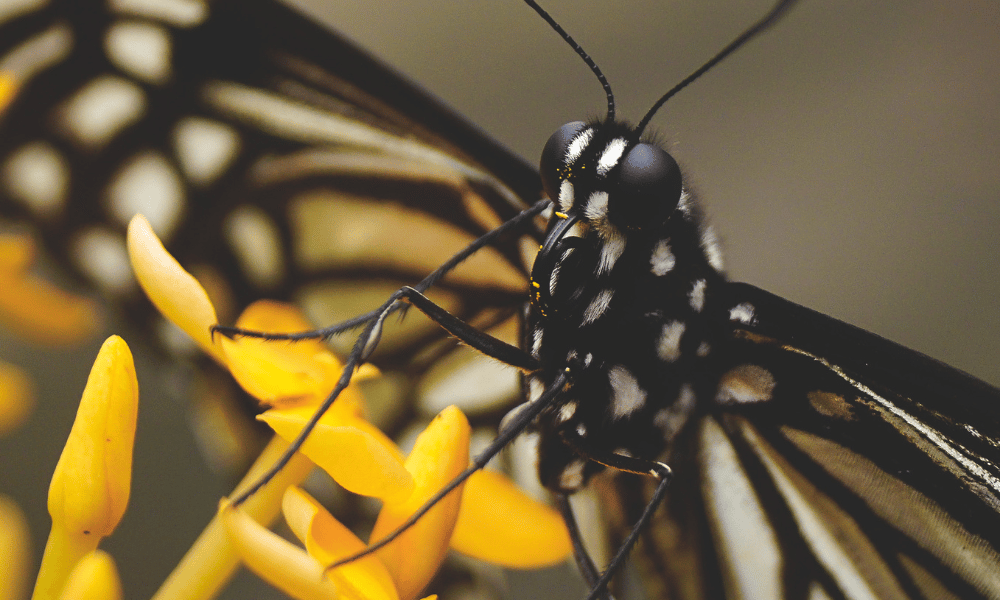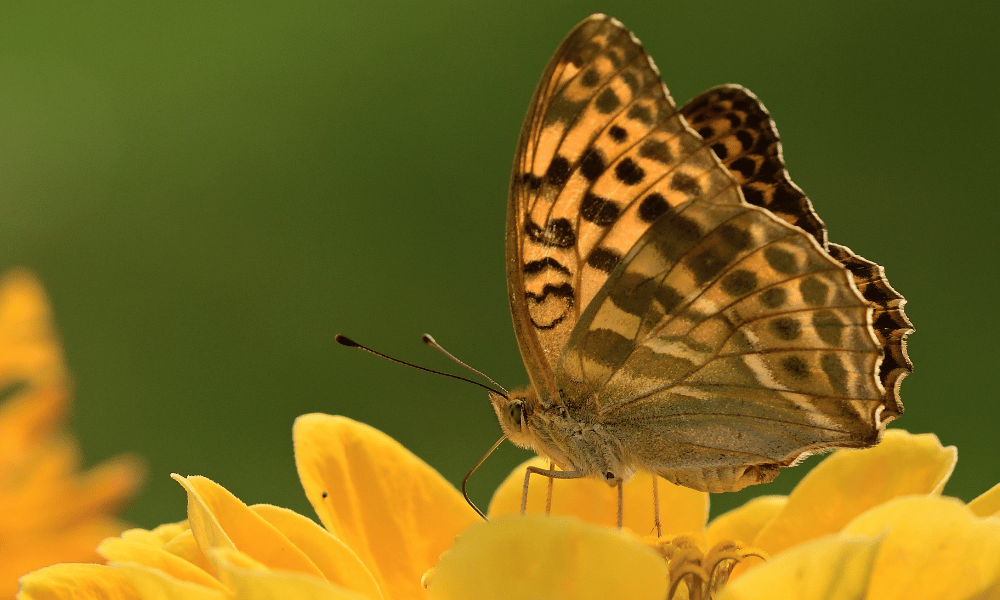You know what a butterfly looks like on the outside, but what about its insides? Are they just like you and I? Do butterflies have hearts, for example?
A butterfly does not have a heart as an internal organ like a mammal. A mammal’s blood is pumped by the heart in a closed circulatory system. For butterflies, their blood does not run through veins but flows freely through their bodies in an open circulatory system.
The butterfly, as with most insects, has a tubular chamber that runs along the top of its body. This is how nutrients are delivered into the haemocoel (body cavity), where the primary organs are situated.
It is not a very efficient pumping system but it works well enough for tiny creatures.
There is also a bit of a mystery about wing-hearts. A study by Harvard Museum discovered some kind of pumping mechanism in the wings. They have called them wing-hearts.
Insect blood (haemolymph) slowly pumps through the fine thread of capillaries (veins) in the wings. This system helps regulate the temperature in the wings.
Do Butterflies Have Brains?
A butterfly has many tasks to learn during its lifetime, such as how to evade predators.
During evolution, some species learned that eating toxic plants would help protect them from predators. Other tasks would be remembering pathways to food supplies. And males need to learn how to outsmart their competitors, while females have all the complications of breeding.
These are only a few examples of why we can say that a butterfly does have a brain, albeit one as small as a pinhead.

Even the larvae with their limited life have a brain. Many of the brain cells will remain intact through the metamorphic stages.
Whilst butterflies are ruled by the seasons and temperatures, they are also hard-wired with genetic pointers to help them survive.
They can also adjust to their environment, to some degree, because they can learn. For example, if a particular nectar flower is in low supply, it’ll change its diet to accommodate a new food supply.
This means that they can learn, and that takes a brain.
Studies have shown that young butterflies can learn from older ones. Although there may only be a week’s difference in age, a week is a long time in a butterfly’s life.
This proves that they have a certain degree of essential instinctual intelligence.
For instance, if you have seen butterflies in an enclosure, such as a polytunnel, you may wonder why they don’t fly into the walls. That’s because butterflies have complex navigating systems and can plot flight paths to avoid obstacles.
They can even use visual landmarks to help them achieve this.
The next time you see a butterfly looking like it’s chilling out in the sun, think again. Its tiny brain is most likely busy working things out, so give it the space and respect it deserves.
Do Butterflies Have Blood?
A butterfly does not have haemoglobin, as in the red blood of mammals. Instead, it has haemolymph, much the same as every insect.
This blood type is a colourless nutritional liquid that passes through its system. It is also known to be heterogeneous, containing many ingredients.
These will include cells, pigments, hormones, proteins, and many other substances needed nutritionally.
One main difference between haemoglobin and haemolymph is that insect blood does not contain red blood cells. The red blood cells of mammals contain oxygen, whereas the circulatory liquid of an insect does not. Haemolymph is primarily water-based.
It also assists in clearing out waste materials that the butterfly produces. The pigments that the insect produces will result in the colouring of this liquid. Sometimes it may appear blue, yellow, or even green.
As a butterfly emerges from its pupa, it leaves behind drops of red liquid. This is not blood but is known as meconium. It looks very similar to blood with its red colouring, but it is faeces that’s been left over from the larvae stage.
Considering larvae are such voracious eaters, it’s not surprising there are leftovers.
Do Butterflies Have Veins?
Because they have an open circulatory system, they do not need large arteries or veins in the same way that a mammal does.
Instead, they have delicate thin vessels known as capillaries, which is how nutrients are transported around the body. The capillaries also assist in the disposal of waste.
In the wings, the capillaries are used as structures to strengthen the wing. Some are full of air. Others help to slowly move haemolymph through the wings, as in the heart-wing theory.
Carleton University showed that some butterflies use capillaries in their wings to hear low-frequency sounds. These are usually night-flying butterflies, who may need to listen out for predators in the dark, such as bat sonar.
A membrane is situated at the base of the wing that can pick up vibrations. A swollen capillary situated close to this membrane assists with the hearing mechanism. This system is likened to a microphone homing in on sounds.
FAQS
Do you have further questions about butterflies and whether or not they have hearts? Then check these FAQs out:
Although they are not hearts as we know them, a butterfly can pulse their wings in a way that helps them to pump blood further through its body.
No, butterflies, like most insects, do not have haemoglobin or blood. Instead, they have what is known as hemolymph.







